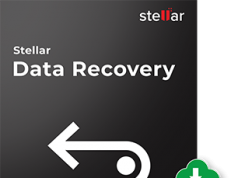In today’s digital landscape, Application Programming Interfaces (APIs) play a pivotal role in connecting diverse systems, enabling seamless data exchange, and fostering innovation across various platforms and devices. However, with their increased usage and integration, APIs have become a prime target for cyber threats, making API security a critical concern for businesses and developers alike. Understanding the risks associated with APIs and implementing robust solutions is paramount to safeguard sensitive data and maintain the integrity of interconnected systems.
The Risks Associated with APIs
The risks associated with Application Programming Interfaces (APIs) span a broad spectrum, encompassing vulnerabilities that, if left unchecked, can compromise the security, integrity, and availability of systems interconnected through these interfaces. Here’s a deeper dive into the various risks:
1. Inadequate Authentication and Authorization Controls
Risk Description:
Weak or inadequate authentication mechanisms and authorization controls pose a significant threat. Insufficiently protected APIs can be exploited by attackers, allowing unauthorized access to sensitive data or functionalities.
Examples:
- Lack of robust authentication mechanisms such as OAuth or API keys.
- Improperly configured authorization rules lead to over-privileged access for certain users or entities.
Potential Impact:
- Unauthorized access to sensitive data or functionalities.
- Breach of confidentiality and data integrity.
- Possibility of unauthorized modifications or deletions.
2. Data Breaches and Exposure
Risk Description:
Mishandling of data within API requests or responses can lead to data breaches. Failure to encrypt sensitive data or improper handling of personally identifiable information (PII) can result in exposure to confidential information.
Examples:
- Inadequate encryption practices for data at rest or in transit.
- Improper masking or handling of sensitive information in API responses.
Potential Impact:
- Compromise of sensitive user data (such as financial information, and personal details).
- Violation of regulatory compliance (e.g., GDPR, HIPAA).
- Damage to organizational reputation and trust.
3. Injection Attacks
Risk Description
Injection attacks exploit vulnerabilities in the API input validation process. Attackers inject malicious code or payloads into API requests to manipulate or retrieve unauthorized data.
Examples:
- SQL injection: Insertion of SQL queries into API requests to access or modify databases.
- XML or JSON injection: Manipulation of XML or JSON data structures to execute unauthorized commands.
Potential Impact:
- Unauthorized access to sensitive data stored in databases.
- Data manipulation or corruption.
- System disruptions or compromise.
4. Denial-of-Service (DoS) Attacks
Risk Description:
API endpoints are vulnerable to DoS attacks where malicious actors flood the system with a high volume of requests, leading to service disruptions or unavailability.
Examples:
- High-frequency requests overwhelm server capacity.
- Exploiting vulnerabilities to exhaust server resources.
Potential Impact:
- Service downtime, impacting user experience and business operations.
- Loss of revenue due to unavailability of services.
- Damage to reputation and trust.
5. Inadequate Monitoring and Logging
Risk Description:
The lack of comprehensive monitoring and logging practices makes it challenging to detect and respond to security incidents or abnormal activities promptly.
Examples:
- Insufficient logging of API activities.
- Inability to detect unusual patterns or suspicious activities.
Potential Impact:
- Delayed detection of security breaches or unauthorized access.
- Inability to trace and investigate incidents effectively.
- Prolonged exposure to threats without timely response.
Solutions for Robust API Security
Robust API security requires a multi-layered approach encompassing various measures to counteract vulnerabilities and protect against potential threats. Here’s an in-depth exploration of solutions to bolster API security:
1. Implement Strong Authentication Mechanisms
Solution: Robust authentication is fundamental in ensuring that only authorized entities access APIs. Utilize industry-standard authentication methods and frameworks like OAuth, OpenID Connect, or API keys to authenticate and authorize users, applications, or devices.
Best Practices:
- Implement multi-factor authentication (MFA) for added security.
- Employ token-based authentication with limited lifetimes to reduce the risk of unauthorized access.
2. Enforce Proper Authorization Controls
Solution: Authorization mechanisms define what authenticated users or entities can access within an API. Implement role-based access control (RBAC) or attribute-based access control (ABAC) to enforce granular permissions and restrict access to sensitive resources.
Best Practices:
- Assign specific permissions based on user roles or attributes.
- Regularly review and update authorization policies to align with business needs and changes.
3. Data Encryption and Transport Layer Security (TLS)
Solution: Encrypting data at rest and in transit is crucial to prevent unauthorized access or interception. Utilize strong encryption protocols such as HTTPS/TLS to secure data transmission between clients and servers.
Best Practices:
- Employ encryption for sensitive data stored within databases or transmitted via APIs.
- Regularly update encryption protocols to use the latest standards and algorithms.
4. Input Validation and Sanitization
Solution: Implement rigorous input validation practices to prevent injection attacks and ensure that only expected and valid data is processed by the API. Sanitize inputs to eliminate potentially malicious content or code.
Best Practices:
- Use input validation libraries or frameworks specific to the programming language or API framework.
- Employ whitelisting approaches to define acceptable input formats and parameters.
5. Thorough Monitoring and Logging
Solution: Establish comprehensive monitoring and logging mechanisms to track API usage, detect anomalies, and respond promptly to security incidents. Monitor API endpoints, traffic patterns, and user activities for potential security threats.
Best Practices:
- Implement real-time monitoring to detect and alert on suspicious activities.
- Log detailed information about API requests, including timestamps, user details, and endpoints accessed.
6. API Rate Limiting and Throttling
Solution: Implement rate limiting and throttling mechanisms to control the number of requests made to APIs. This helps prevent abuse, brute-force attacks, and potential denial-of-service (DoS) scenarios.
Best Practices:
- Set appropriate rate limits based on the API’s intended usage and capacity.
- Implement dynamic rate limiting to adjust thresholds based on traffic patterns and user behavior.
7. Regular Security Audits and Updates
Solution: Conduct regular security audits, and vulnerability assessments, and apply timely security patches and updates to address emerging threats and vulnerabilities. Stay abreast of security best practices and evolving attack vectors.
Best Practices:
- Perform automated and manual security assessments to identify weaknesses.
- Stay informed about security advisories and apply patches promptly.
Conclusion
Securing APIs is indispensable in safeguarding digital ecosystems against evolving threats to cyber security and information security. By understanding the risks associated with APIs and implementing a holistic approach to API security—encompassing robust authentication, proper authorization, encryption, input validation, monitoring, and regular updates—businesses and developers can fortify their systems and data against potential breaches and cyber attacks.
Remember, API security is an ongoing process that requires continuous evaluation, adaptation, and vigilance to ensure a resilient defense against emerging threats in an increasingly interconnected digital landscape.
Follow Technoroll for more!





